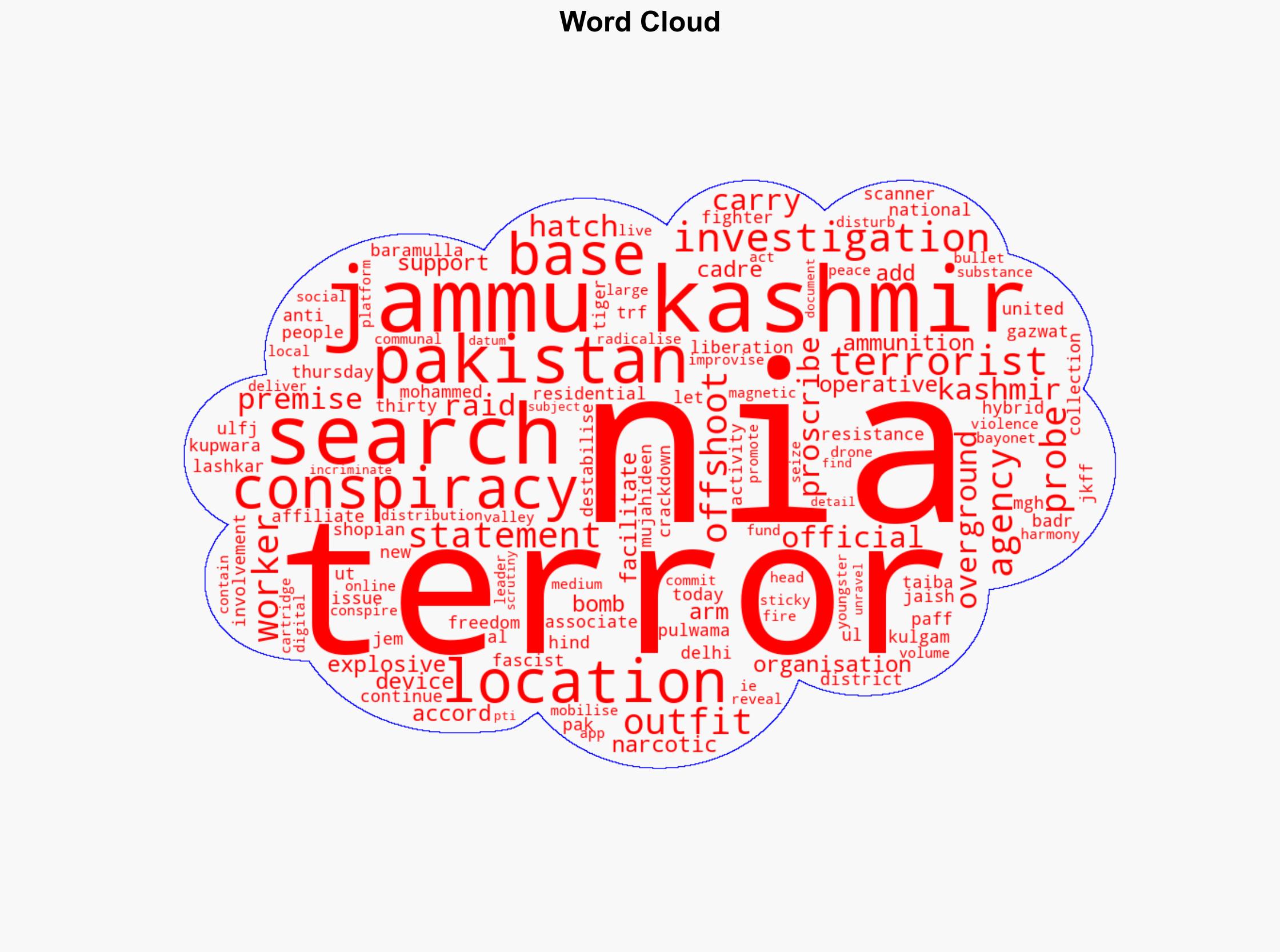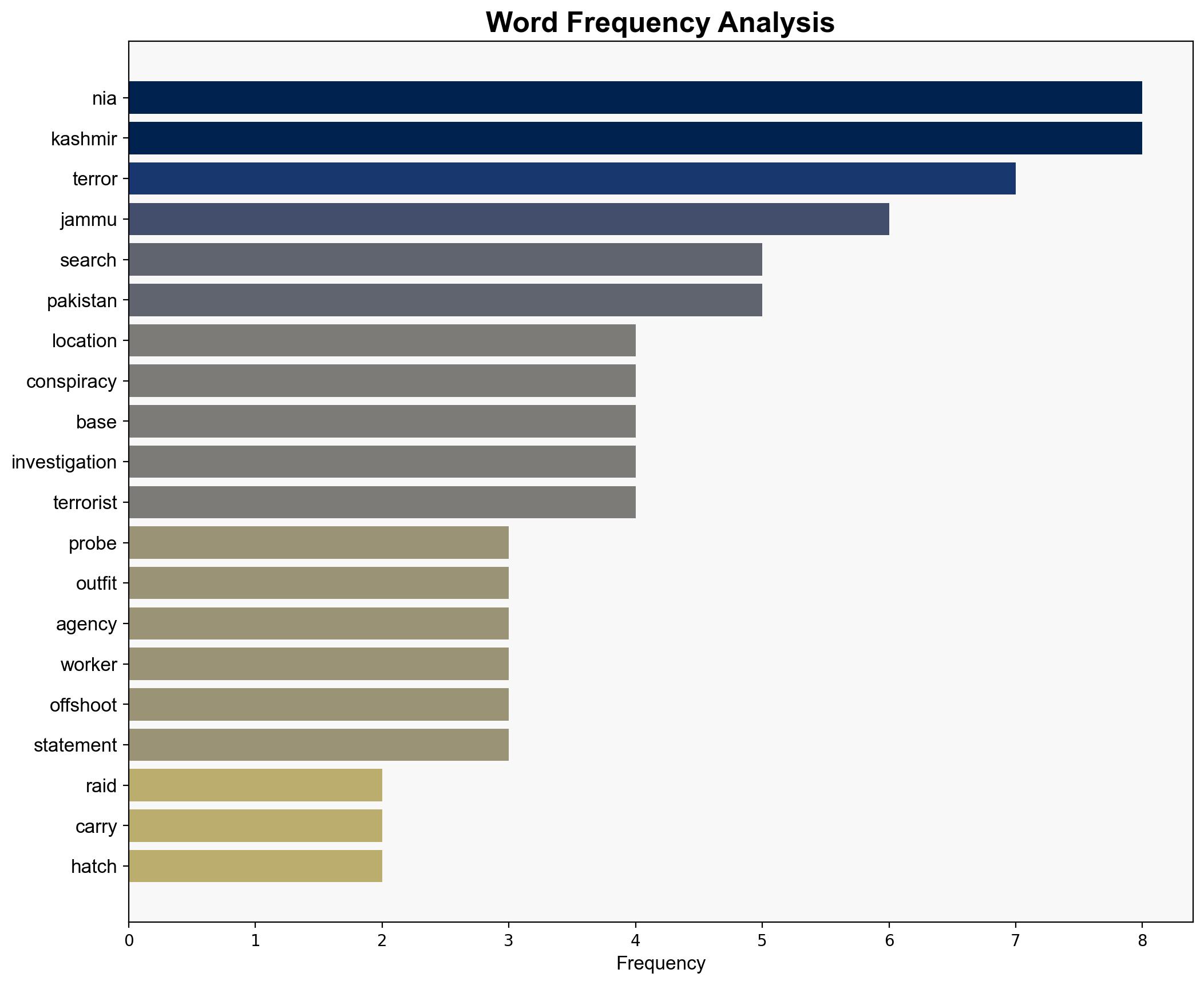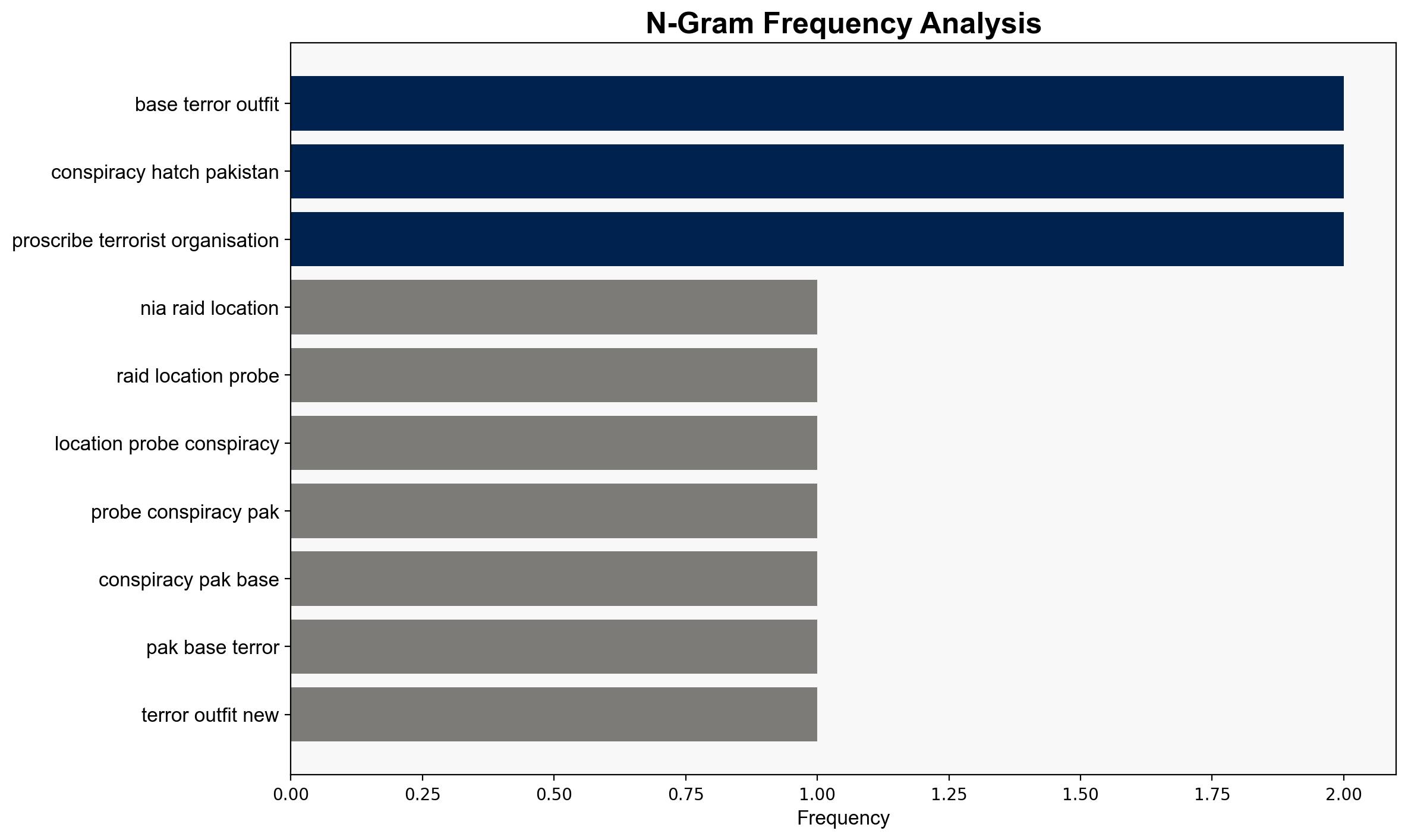NIA raids 32 locations in JK to probe conspiracy by Pak-based terror outfits – Statetimes.in
Published on: 2025-06-05
Intelligence Report: NIA raids 32 locations in JK to probe conspiracy by Pak-based terror outfits – Statetimes.in
1. BLUF (Bottom Line Up Front)
The National Investigation Agency (NIA) conducted raids across 32 locations in Jammu and Kashmir to investigate a conspiracy involving Pakistan-based terror outfits. The operation targeted residential premises linked to hybrid terrorists and overground workers associated with groups like The Resistance Front (TRF) and Lashkar-e-Taiba (LeT). The raids aimed to disrupt a network facilitating terrorist activities, including the distribution of explosives and narcotics. Immediate recommendations include strengthening regional intelligence-sharing mechanisms and enhancing border security protocols.
2. Detailed Analysis
The following structured analytic techniques have been applied to ensure methodological consistency:
Causal Layered Analysis (CLA)
Surface events: Raids conducted by NIA in Jammu and Kashmir.
Systemic structures: Cross-border terrorism facilitated by Pakistan-based groups.
Worldviews: Perception of Jammu and Kashmir as a destabilized region.
Myths: Historical narratives of conflict and resistance in the region.
Cross-Impact Simulation
The raids may lead to heightened tensions between India and Pakistan, potentially affecting diplomatic relations. Increased security measures could disrupt local economies and daily life in affected districts.
Scenario Generation
Best Case: Successful dismantling of terror networks, leading to improved regional stability.
Worst Case: Retaliatory actions by terror groups, escalating violence in the region.
Most Likely: Continued low-intensity conflict with sporadic terrorist activities.
3. Implications and Strategic Risks
The operation highlights the persistent threat of cross-border terrorism and the use of local networks to facilitate attacks. There is a risk of increased radicalization and recruitment efforts by terror groups. Cybersecurity threats may also emerge as operatives use digital platforms for coordination.
4. Recommendations and Outlook
- Enhance intelligence collaboration with regional and international partners to monitor and counteract terror activities.
- Implement community engagement programs to prevent radicalization and support deradicalization efforts.
- Strengthen cybersecurity measures to prevent the use of digital platforms for terrorist coordination.
- Scenario-based Projections:
- Best Case: Strengthened regional security and reduced terrorist activities.
- Worst Case: Escalation of violence and increased cross-border tensions.
- Most Likely: Ongoing security challenges with intermittent successes in counter-terrorism efforts.
5. Key Individuals and Entities
The Resistance Front (TRF), United Liberation Front of Jammu and Kashmir (ULFJ), Mujahideen Gazwat-ul-Hind (MGH), Jammu and Kashmir Freedom Fighters (JKFF), Kashmir Tigers, People’s Anti-Fascist Front (PAFF), Lashkar-e-Taiba (LeT), Jaish-e-Mohammed (JeM), Al-Badr.
6. Thematic Tags
national security threats, cybersecurity, counter-terrorism, regional focus





